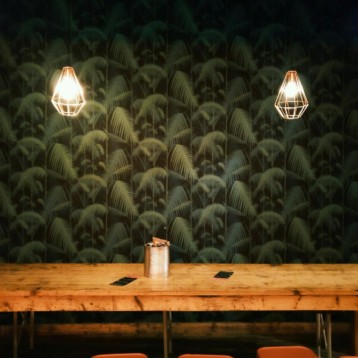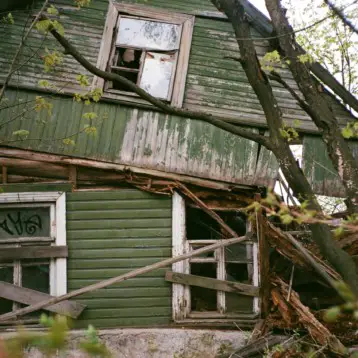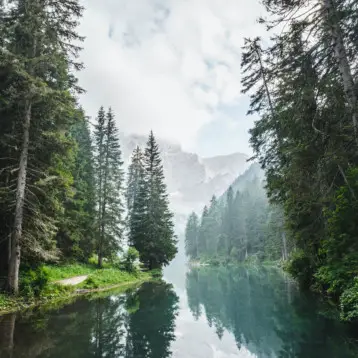The Biosphere 2 Project was built by Space Biosphere Ventures in Oracle, Arizona between 1987 and 1991 at a cost of about $200 million. The idea behind the project (and its name) was to create a second, alternative biosphere, which scientists can precisely control and study, in order to learn more about the first biosphere – that of our planet.
After several small scale experiments where scientists spent anywhere between several hours and several weeks sealed inside the test module, the real experiment began in late 1991. A team of several researchers and one medical doctor were sealed inside the huge glass dome of Biosphere 2 for two full years, growing their own food and taking care of themselves without outside assistance.
The ambitious project suffered from problems from the start. Although some foods (such as bananas) grew well inside the dome other crops did not, so the eight team members had very little to eat. Another problem was that the oxygen level inside the dome dropped, partially due to low levels of sunshine that led to a low level of photosynthesis.
Two years after the end of the first mission, a second team attempted a shorter 10 months mission. It was a complete failure. The Biosphere 2 management ran into a publicized dispute followed by what some describe as a deliberate sabotage by two team members of the first mission who opened the doors to the dome and let air in. Although the events still spark a controversy as for the reasons for the alleged sabotage, one thing is clear, the second mission ended prematurely and the management of Biosphere 2 dissolved.
Between 1995 and 2003 the project was run by Columbia University who sent students to work and study inside the dome. Since 2005, funding problems threatened to disable continuation of the project and demolition of the dome was a real danger. Only in late June 2006 did the University of Arizona announce that it is going to save the Biosphere 2 Project, reestablishing it as a research site as well as a tourist attraction.
Despite its controversial past Biosphere 2 is a remarkable project. The 34.5-acre (14 hectare) facility includes a huge 3.14 acres (1.27 hectares) of controlled-environment, sealed from the earth below by 500-tons (453,600 kg) of welded stainless steel liner. Ninety-one feet (28 meters) tall at its highest point, it has 6,500 windows that enclose a volume of 7.2 million cubic feet (204,000 cubic meters) under the glass dome.
Future studies inside the facility will allow the researchers to control and measure what enters and leaves the huge experimental chamber. A large and sophisticated array of sensors deployed throughout the chamber’s atmosphere and the hill slopes will monitor environmental factors including water, carbon dioxide, temperature levels, trace gases and pH. This will help scientists better understand changes in the environment caused by global warming, as well as other issues concerning water, soil, air and vegetation.
More information on the Biosphere 2 Project can be found on the project’s official website.










